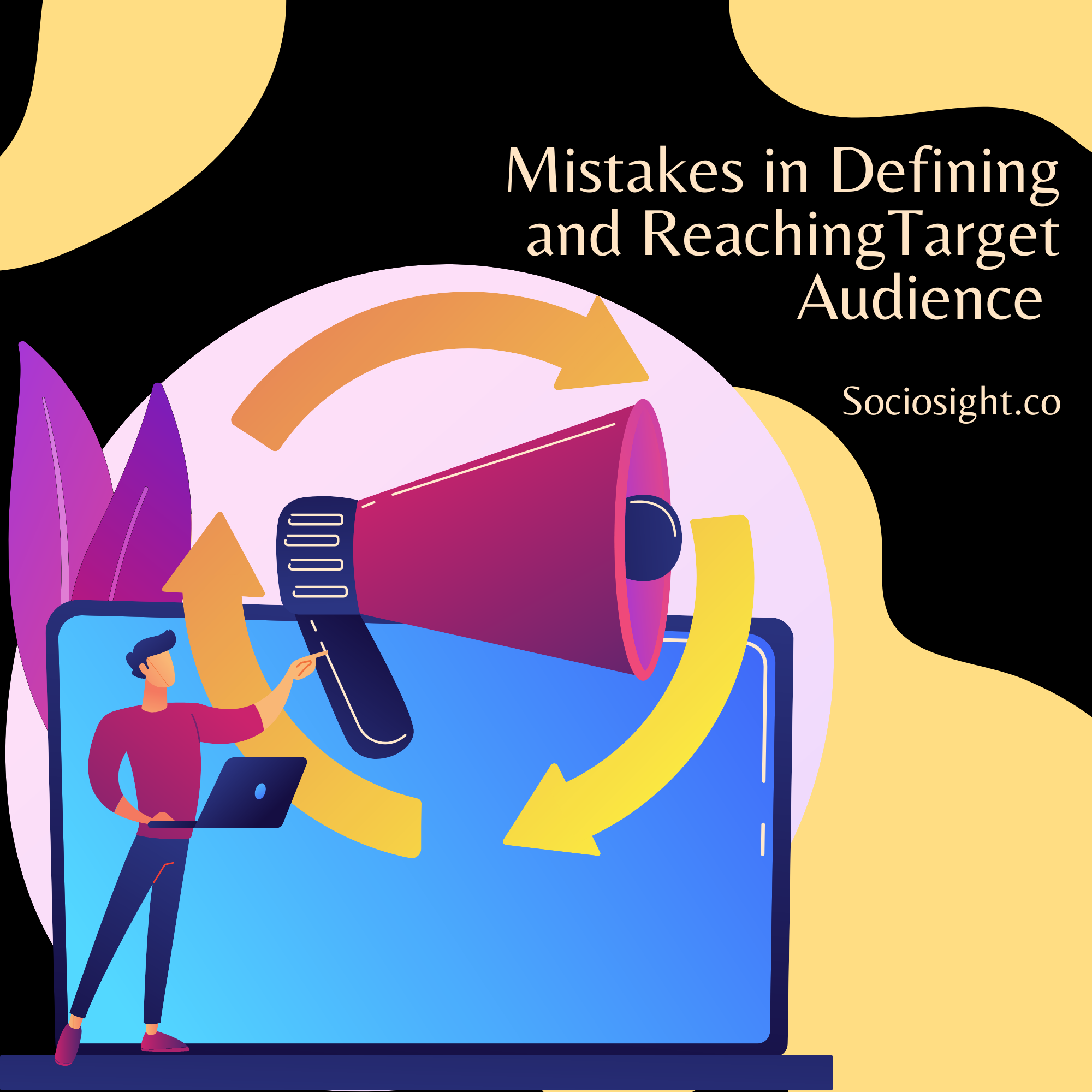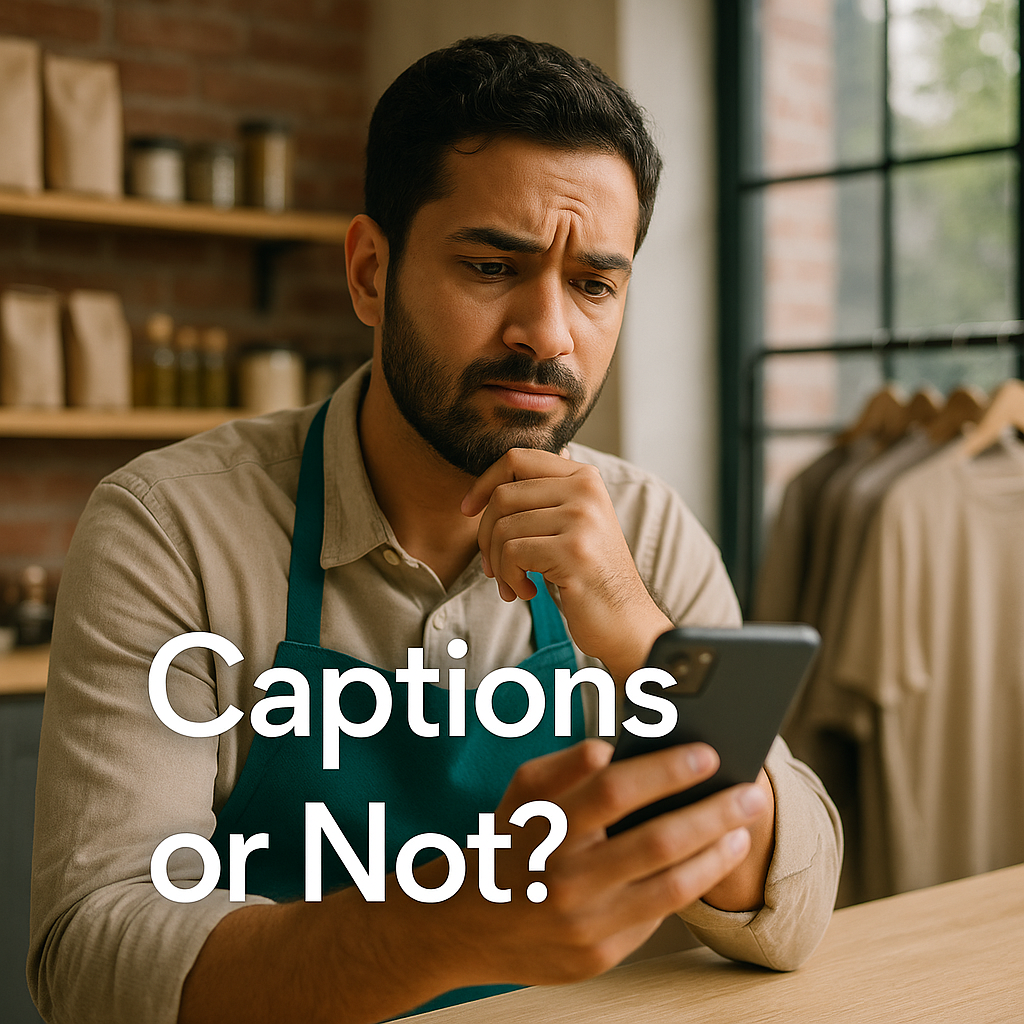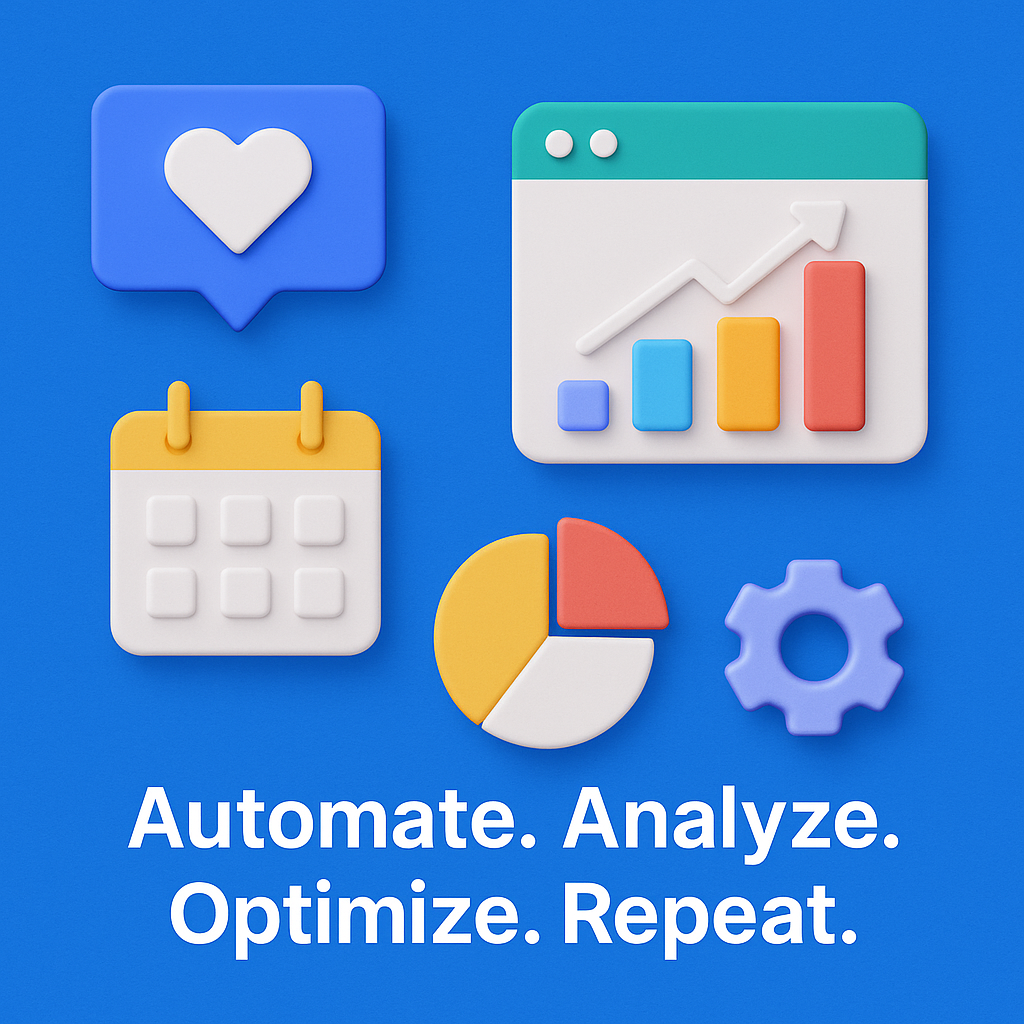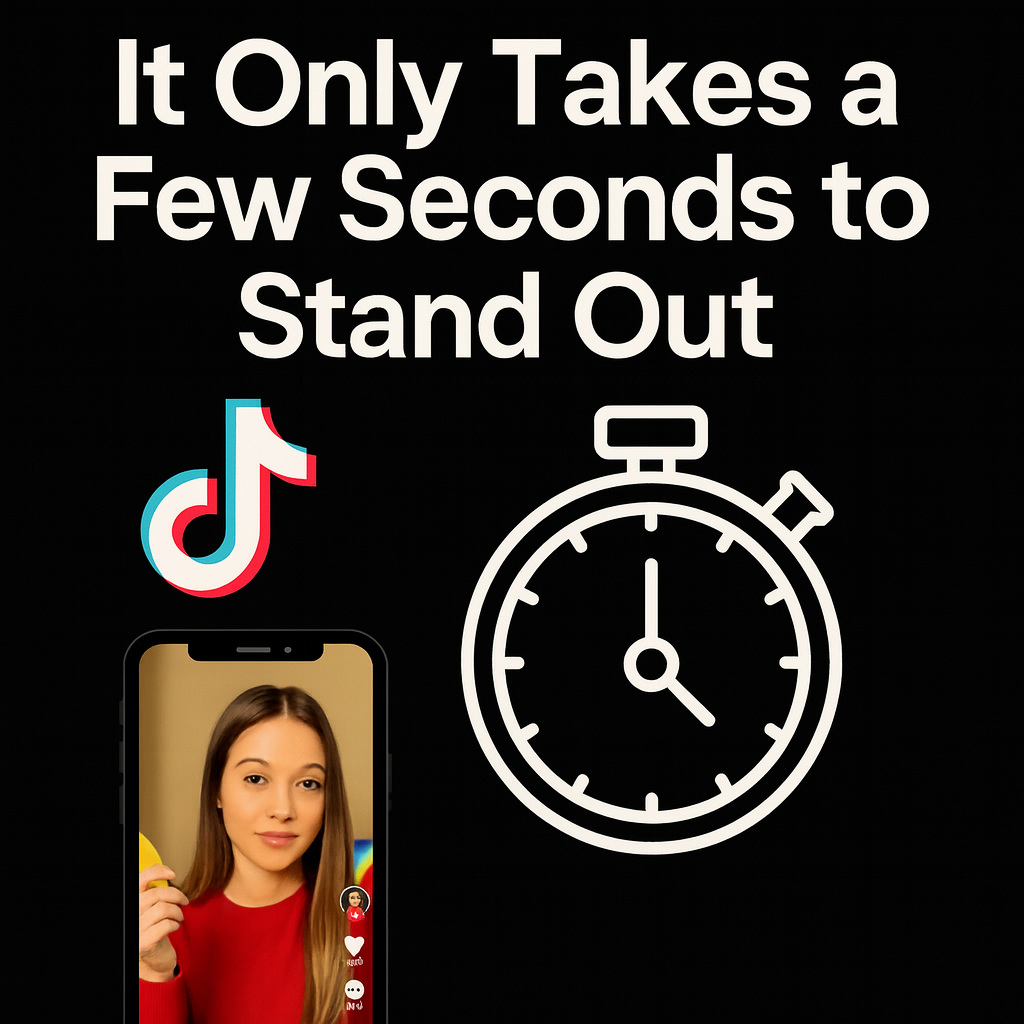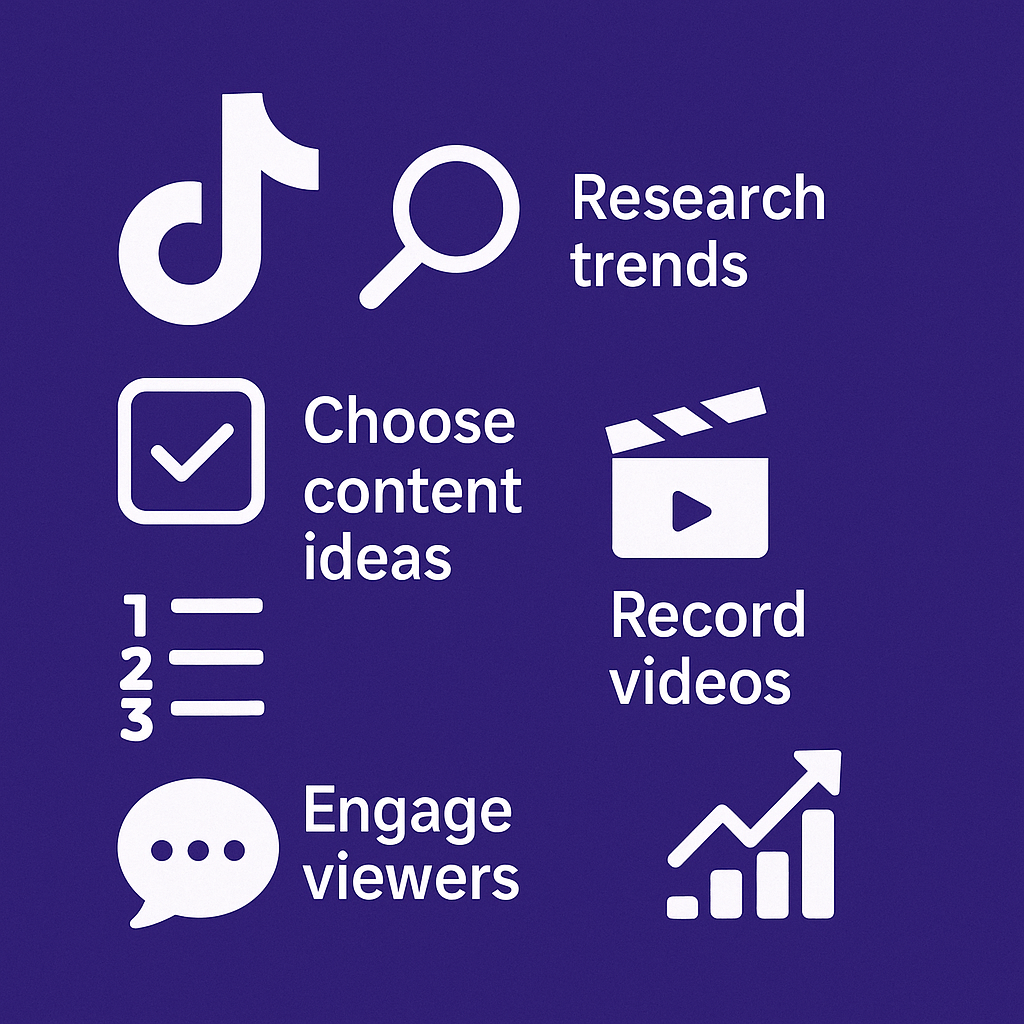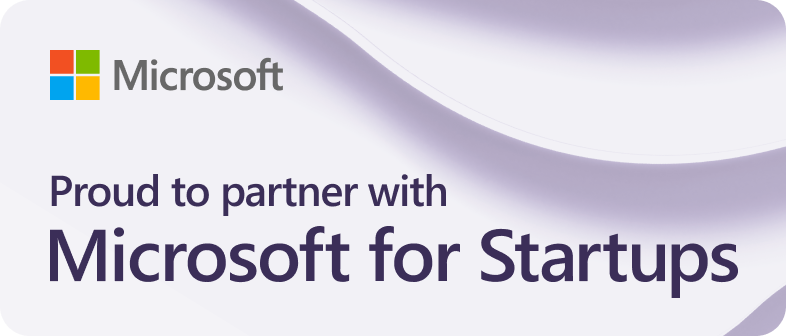Are you ready to up your social media game? Defining your target audience is the first step to a rockin’ social media strategy.
Understanding who your ideal customer is on social media can mean the difference between crickets and conversions.
But it’s easy to slip up and make common mistakes about your target audience.
From thinking everyone is a potential customer to ignoring what the competition is up to, these mistakes can leave you with lackluster campaigns and missed sales.
Table of Contents
7 Common Mistakes You Could Make When Defining and Reaching Your Target Audience on Social Media
In this article, we’ll break down 7 target audience mistakes you might be making on social media and how to avoid them.
By getting to know your target audience and making thoughtful decisions, you’ll be well on your way to social media success!
Let’s dive in!
![7 Defining and Reaching Target Audience Mistakes That Can Take Your Small Business Big Time in Social Media Marketing [Infographic] 1 7 Defining and Refining Target Audience Mistakes - Sociosight.co - Social Media Management](https://sociosight.co/wp-content/uploads/2023/02/Target-Audience-Mistakes-410x1024.png)
Mistake #1: Assuming Everyone is a Potential Customer
Assuming everyone on social media as your potential customer is a big ‘no-no’!
Sure, it’s a good idea to believe that your followers and fans on social media are interested in what you offer.
But the truth is, not everyone will be into what you’re selling. And that’s where things can go wrong.
Do you struggle with managing multiple social media platforms for your brand's presence?
The Sociosight app can help you simplify the process and save you time. With Sociosight, you can publish, schedule, and monitor posts and engage with your followers across multiple social media platforms, all from one dashboard.
Get started today with a free sign-up!
Register Now for Free

By assuming that everyone is your target audience, you’re missing out on the chance to connect with the people who are interested and wasting time and resources talking to those who aren’t that into you.
So, if you are experiencing low engagement on your social media posts that lead to fewer conversions, it’s time to change!
Considering creating customer personas and identifying customer journeys as your new best friends in social media content management strategies.
Customer personas are like your ideal customer’s alter ego – they can give you a better understanding of their needs, pain points, and interests.
You may include demographic data like age, income, education, and location when creating customer personas. Also, you may incorporate psychological data related to their pain points and interests, geographical data, and other data to give you even more insights into your target audience.
And remember the customer journey!
![7 Defining and Reaching Target Audience Mistakes That Can Take Your Small Business Big Time in Social Media Marketing [Infographic] 2 7 Defining and Refining Target Audience Mistakes - Sociosight.co - Social Media Management](https://sociosight.co/wp-content/uploads/2023/02/Customer-Journey-1024x1024.png)
The customer journey is about understanding the different stages a customer goes through, from awareness to consideration to decision.
Let’s look at an example of a retail clothing store’s mistake of targeting everyone when creating social media posts for different customer journey stages and how to improve it.
Awareness Stage:
Example: “Check out our new arrivals! We have something for everyone.”
Mistake: This post assumes everyone is interested in the new arrivals and doesn’t consider the customer’s style preferences or needs.
Improved Version: “Attention all fashion-forward ladies! Our new arrivals are perfect for your trendy wardrobe. Check them out now.”
Consideration Stage:
Example: “Are you tired of your clothes not fitting right? Try ours instead.”
Mistake: This post assumes that the customer is experiencing fit issues with their everyday clothes but doesn’t consider the customer’s specific size or body type.
Improved Version: “Tired of clothes that don’t fit just right? Our plus-size clothing line is specifically designed to fit and flatter your curves. Check it out now.”
Decision Stage:
Example: “Don’t wait! Buy our clothes now and get 20% off!”
Mistake: This post assumes that the customer is ready to purchase but doesn’t consider the customer’s budget or decision-making process.
Improved Version: “Ready to update your wardrobe? Our clothes are now 20% off for a limited time. Take advantage of this offer and elevate your style today.”
By avoiding these common mistakes and creating targeted content at each stage of the customer journey, a retail clothing store can connect better with its target audience and drive conversions on social media.
By creating customer personas and considering the customer journey, you can tailor your content and approach to each group’s unique needs and interests, avoiding the mistake of assuming that everyone is a potential customer.
Mistake #2: Failing to Personalize Your Marketing Efforts on Every Stage of the Customer Journey
So, as a small business owner, it’s important to understand that your target audience is individuals with unique needs, preferences, and interests. This means you can’t simply create a one-size-fits-all marketing strategy and expect it to be effective.
Instead, it would be best if you tailor your marketing efforts based on the specific needs and interests of each segment of your target audience at each stage of the customer journey.
You can segment your target audience into different groups based on their behavior, such as their search history, purchases, and engagement with your brand.
You can then tailor your content to address their specific pain points and interests at each stage of their customer journey with your brand.
For example, if your target audience is just starting their research, they will likely be looking for general information about your product or service. In contrast, the audience close to purchasing will most likely be interested in more specific details like comparisons or special offers.
Also, you can use language that resonates with them and offer tailored promotions and incentives.
Let’s take a look at a case study below.
Let’s assume that you’re a clothing retailer.
You have identified three segments of your target audience: young professionals, families, and retirees.
Now, you will publish social media content for each segment at each stage of their customer journey.
For young professionals:
- Awareness Stage: This segment is likely active on social media and interested in fashion. You could create eye-catching, visually appealing posts featuring the latest fashion trends and styles. You could also offer special discounts for first-time customers to entice them to visit your physical store.
- Consideration Stage: This segment might compare different options and research before making a purchase. Create posts highlighting your unique selling points, such as high-quality materials and sustainable production processes. You could also offer a virtual try-on feature, so customers can see how the clothes look on them before making a purchase.
- Decision Stage: This segment is ready to make a purchase. You could create personalized social media ad campaigns on Facebook with exclusive discounts and incentives, such as free shipping or a gift with a purchase, to encourage them to make a purchase.
For families:
- Awareness Stage: This segment is likely looking for stylish and practical clothing for their children. You could create posts featuring cute and comfortable outfits for kids and family-friendly activities in the area.
- Consideration Stage: This segment might be comparing prices and quality and looking for the best value for their money. You could create posts highlighting their affordability and durability, customer reviews, and ratings.
- Decision Stage: This segment is ready to make a purchase. You could create personalized Instagram ad campaigns with exclusive discounts and incentives, such as a free gift for the kids with each purchase, to encourage them to purchase.
For retirees:
- Awareness Stage: This segment is likely looking for comfortable, stylish clothing for daily activities. You could create posts featuring cozy and stylish outfits for seniors and highlighting your in-store amenities, such as comfortable seating and convenient parking.
- Consideration Stage: This segment might be looking for quality and durability and interested in your history and reputation. You could create posts highlighting your history of quality and reliability, as well as customer reviews and ratings.
- Decision Stage: This segment is ready to make a purchase. You could create Facebook posts with exclusive discounts and incentives, such as a free gift with each purchase or a discount on future purchases, to encourage them to purchase.
By personalizing your marketing efforts based on the unique needs and interests of each segment of your target audience at each stage of the customer journey, you can effectively reach and engage their target audience, leading to increased customer loyalty and sales.
Mistake #3: Neglecting Data and Insight
Staying informed about your target audience is crucial to success in social media marketing.
Relying on assumptions instead of data and not keeping up with evolving customer needs and behaviors can lead to missed opportunities, ineffective campaigns, and a disconnect with your customers.
Let’s get more understanding by looking at the following examples:
A Tech Company
Let’s say you run a tech company that sells smartphones.
Your target audience consists of tech-savvy millennials who love cutting-edge technology.
However, if you don’t stay up-to-date with their changing needs and preferences, you might miss the boat on the latest must-have features they’re looking for in a smartphone.
On the other hand, if you rely on assumptions about what your target audience wants without gathering data and insights, your social media campaign might not resonate with them, which could cost you the conversions you expect.
For instance, if you assume that your target audience is only interested in large screens and high-end cameras, you might miss out on other essential features they’re looking for, such as long battery life, water resistance, or a headphone jack.
The tech world is constantly evolving, and your target audience’s needs and preferences will likely change. It’s important to stay informed and gather data and insights regularly to keep up with these changes.
A Retail Clothing Store
Imagine you’re a retail clothing store, and you assume that all of your target audience loves bright colors and bold patterns.
You might assume that your target audience is primarily interested in casual, everyday wear.
Based on your assumption, you create a social media campaign featuring t-shirts and jeans.
However, their tastes and preferences can change with time. You have yet to gather data to stay in the loop on these shifts.
As a result, after launching the campaign, you see low engagement on your social media posts, few conversions, and negative feedback from your target audience.
Had you gathered the actual data, you would have discovered that your target audience prefers casual dress with simple patterns.
A Café
Consider if you’re the owner of a cafe.
You might assume that your target audience is primarily interested in traditional coffee flavors like espresso and cappuccino. Based on your assumption, you create a social media campaign promoting these drinks.
However, you did not realize that your audience’s preferences could evolve. So, after launching the campaign, you see low engagement, few conversions, and negative feedback.
Later on, you knew that your target audience is actually interested in unique and innovative coffee flavors like nitrogen-infused coffee and coffee cocktails, which you would have known earlier if you had kept up with their changing needs and preferences.
How to Avoid These Mistakes?
So, as you can see, not staying informed about the changes in your audience’s needs and preferences and relying solely on assumptions can be a costly mistake.
To avoid these mistakes, it’s crucial to regularly gather data and insights about your target audience and stay on top of industry trends and changes.
You can conduct surveys, interview your existing customers, analyze the data you already have, and even keep an eye on what your competitors are doing.
So, keep your target audience from slipping away! Stay informed about their changing needs and behaviors, and watch your social media marketing take you to your goals.
Mistake #4: Not Continuously Reviewing and Refining Your Target Audience Definition
When it comes to defining your target audience, it’s not a one-and-done deal.
Your existing customers, who are your primary target audience, can change over time. It’s crucial to continuously review and refine your definition to ensure that you’re accurately targeting the right people. Neglecting to do this can lead to outdated and ineffective marketing efforts that fail to connect with your target audience.
A Case Study
For example, let’s say you’re the owner of a cafe that primarily targets young professionals in their 20s and 30s. Over time, you will notice that your target audience is aging and becoming more family-oriented.
However, you continue to market your cafe as a hip, young professional hangout.
Doing so may cause you to lose chances to connect with your changing target audience, who are supposed to be your loyal customers.
In such a situation, you may question whether you will broaden your target audience from targeting young professionals to catering to family-oriented customers.
Answer your question by collecting data through various means, including interviewing your existing customers.
The key is finding the right balance and retaining your business’s core essence.
Suppose your data suggest broadening your target audience. In that case, you need to explore content ideas to cater to both segments of your target audience.
Let’s try the following ideas of how your café could cater to young professionals and family-oriented customers.
- For young professionals, your cafe could offer a variety of specialty coffee drinks, quick and healthy meal options, and a cozy atmosphere for working or socializing. To attract this demographic, you could also offer events such as trivia nights, open mic nights, or live music.
- For families, your cafe could offer kid-friendly menu items, such as grilled cheese and fruit platters, and family-oriented events, like weekend brunch with face painting and balloon artists. You could also create a welcoming atmosphere for families, with high chairs and a play area for kids.
By offering a mix of options and experiences, your cafe can attract and retain young professionals and families. The key is finding the right balance and ensuring that each demographic feels valued and welcomed.
It’s also crucial to continuously gather feedback and data to ensure that your marketing efforts resonate with your target audience and make updates as needed. By regularly reviewing and refining your target audience definition, you can stay ahead of the curve and avoid outdated and ineffective marketing efforts.
Mistake #5: Neglecting to Engage with Your Target Audience
Businesses often make the mistake of simply broadcasting messages to their target audience without engaging with them.
This action can result in a lack of feedback, limited understanding of their target audience’s needs, and missed opportunities for building relationships and loyalty.
For example, let’s say you run a cafe and primarily use social media to post pictures of your menu items and promotions.
While this is a great way to showcase your offerings, engaging with your target audience by responding to comments and messages, asking for feedback, and creating content that encourages interaction and discussion is also crucial.
By doing this, you can better understand your target audience’s preferences, build relationships with them, and foster a sense of community around your brand.
Another example could be you have a clothing retailer business that primarily uses social media to showcase your latest collections and sales. While this is a great way to drive sales, engaging with your target audience is crucial.
You can ask them for feedback on specific products, host virtual events and contests, and respond to customer inquiries and comments promptly and securely. Doing this can build a loyal following and foster a sense of community around your brand.
Despite the need for engagement with your target audience, it can be more challenging with so many different social media platforms available.
You may have a lot of comments and messages to respond to.
One solution to this challenge is to use a social media management tool like Sociosight.
Although the engagement feature to respond to comments and the social inbox feature to respond to messages are still under development, the scheduling feature is available now.
This scheduling feature allows you to schedule and publish your content across multiple social media channels, making it easier to stay connected with your audience.
Using a tool like Sociosight allows you to quickly respond to your audience’s comments and messages from a single platform, no matter where they were posted. This makes staying engaged with your target audience and maintaining a consistent brand voice across your social media channels easier.
Mistake #6: Ignoring the Competition
When defining your target audience and creating marketing strategies, it’s crucial to keep an eye on what your competition is up to. Neglecting to consider your competition can result in missed opportunities for differentiation and a lack of competitive edge.
For instance, let’s say you’re the owner of a cafe specializing in artisan coffee and pastries.
You’ve defined your target audience as young professionals looking for a unique, high-end coffee experience. But upon doing some research, you realize that your nearby competitors have also honed in on this target audience.
So, how do you differentiate your cafe from the rest?
One strategy could be to focus on the quality of your ingredients and the experience you offer.
You may source your coffee beans from a small, single-origin roaster or provide a cozy, welcoming atmosphere perfect for working or relaxing.
Another strategy could be to offer unique, seasonal menu items that your competitors don’t have. This could give customers a reason to choose your cafe over others in the area.
Another option could be to target a different segment of the market.
For instance, you could focus on families and tourists who are looking for a quick, convenient coffee stop.
By offering grab-and-go options, like pre-made pastries and drinks, you can attract a different market segment than your nearby competitors.
So, it’s essential to continually keep tabs on your competition, their target audience, and their marketing strategies.
This information can help you identify opportunities for differentiation and competitive advantage. Don’t let the ignorance of your competition hold you back – stay ahead of the game!
Mistake #7: Not Taking a Multi-Channel Approach
In today’s digital age, having a solid social media presence is crucial for reaching your target audience effectively.
But relying on just one channel, like Instagram or Facebook, is a mistake that can result in missed opportunities for maximum exposure and engagement.
By not considering different channels, you’re limiting your reach and missing out on the chance to connect with other segments of your target audience.
For example, let’s say you’re a cafe owner and primarily use Instagram to reach your target audience.
While Instagram is an excellent platform for showcasing your menu and connecting with customers, your target audience is also active on Facebook, Twitter, or Pinterest.
Not using hose platforms causes you to miss out on opportunities to reach your target audience where they’re most active and engage with them in a meaningful way.
Additionally, combining organic and paid advertising strategies across multiple channels can help you reach your target audience more effectively.
For example, you could use Instagram to showcase your menu and promote your cafe through organic posts while using Facebook to reach your target audience with targeted ads.
Moreover, it’s important to create personalized content for each platform, catering to your target audience’s different profiles and interests on each channel.
You can use content batching and social media scheduling strategies to maximize your efforts and reach your target audience where they’re most active.
Conclusion
Defining and reaching your target audience in marketing is crucial to any successful marketing campaign. However, it can be challenging and requires careful planning, research, and execution.
These mistakes include assuming everyone is a potential customer, failing to personalize marketing efforts, neglecting to stay informed about the target audience, not continuously reviewing and refining the target audience definition, failing to engage with the target audience across multiple social media channels, ignoring the competition, and not taking a multi-channel approach.
By avoiding these mistakes and following best practices, you can create social media marketing campaigns that effectively reach your target audience and drive results.
And when it comes to managing multiple social media channels, Sociosight App can be a great help with its scheduling feature and its upcoming social inbox and engagement features that will allow you to respond to your audience’s comments and messages across multiple channels.
Are you ready to avoid these seven mistakes? Share your thoughts in the comment sections or drop us an Instagram DM @sociosight.co.




